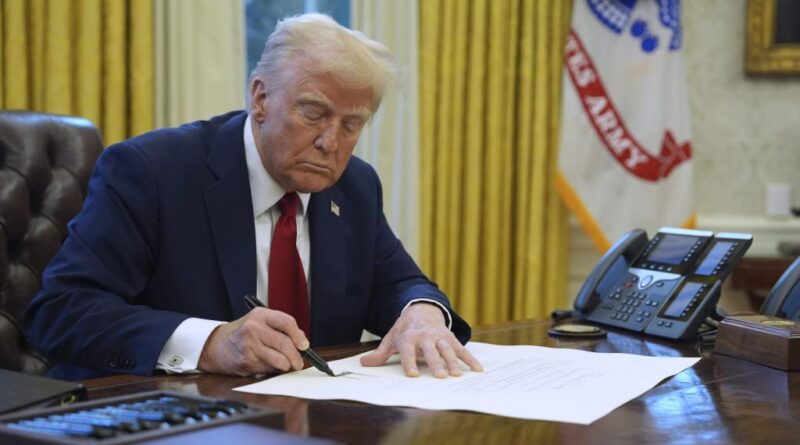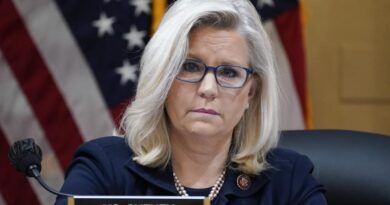NY Schools Keep Kids Stuck in Failure – Trump’s Solution for an Escape

It is a grievous moral failing to keep children trapped in schools where learning scarcely exists. Last week, President Trump took a meaningful step toward rectifying this: He proclaimed that every child is entitled to a quality education, irrespective of their zip code.
This declaration offers a glimmer of hope for countless children across New York state who are compelled to attend underperforming neighborhood public schools.
State lawmakers and Governor Hochul coldly overlook the dire circumstances faced by these children confined to failing schools. Echoing the teachers’ union, these politicians perpetuate the myth that an infusion of tax dollars can revitalize poor-performing schools.
New York already allocates an astonishing $36,293 per public school student — the highest in the nation.
Despite this hefty expenditure, students score merely in the “middle of the pack” on national assessments, as indicated by the National Assessment of Education Progress results that were released recently.
The results suggest that New York taxpayers are getting a raw deal, shelling out premium prices for subpar outcomes.
However, it’s worse than that: New Yorkers are actually paying top dollar for outright failure.
The NAEP averages project an overly optimistic view, mingling results from schools in affluent districts like Scarsdale or Bronxville with dismal scores from students trapped in failing institutions located in Poughkeepsie, Gloversville, and the poorest public schools in New York City.
New York isn’t just wasting funds; it’s wasting lives.
Consider the grim odds facing children in Poughkeepsie, where a mere 5% of fourth-graders demonstrate proficiency in English, according to state data.
Persistently failing schools should be closed by the State Education Department.
Instead, through a procedure known as receivership, New York keeps these failing institutions open and “under review” for three to six years — a farce that protects union positions at the expense of young lives.
Failing schools can be spotted across the state.
In the Mohawk Valley town of Gloversville, three-quarters of the predominantly white student body are categorized as economically disadvantaged.
The real disadvantage comes from the fact that just 8% of eighth-graders in Gloversville are proficient in math, and only 6% of high school students pass Algebra 1. Yet, kids from Gloversville face no available educational alternatives.
In contrast, economically disadvantaged students in Florida have options — they can switch to another district’s public school or opt for one of the state’s 700 charter schools.
The results are remarkable: Disadvantaged children in Florida achieve higher scores in math and reading than their underprivileged peers across the United States, even though Florida ranks 43rd in terms of spending per pupil.
Choice and competition yield positive outcomes.
Yet, inexplicably, New York lawmakers prioritize spending while minimizing choice.
Most state legislators receive endorsements and funding from the New York State United Teachers — effectively allowing NYSUT to dictate policy.
It’s no wonder that New York boasts the second-highest teacher salaries in the country.
At the union’s urging, the state legislature limits the number of charter schools, despite clear evidence that charters educate students at half the cost of district schools, typically achieving much better results.
Most concerning is that educational policies outside New York City are determined by a completely insulated group of officials that most New Yorkers are unfamiliar with — the Board of Regents and the state education commissioner.
They consistently produce failure yet retain their positions — this year, they even awarded Commissioner Betty Rosa an outrageous $155,000 raise, which brings her total compensation to a staggering $489,000 annually.
In 2000, a mainly Republican state administration granted control of New York City’s public education system to then-Mayor Mike Bloomberg, who shuttered failing schools and expanded charter options.
Student outcomes improved — until Bloomberg’s successor, Bill de Blasio, rolled back those reforms.
However, Bloomberg demonstrated that success is possible.
Ideally, New Yorkers statewide would rise up, vote out legislators beholden to unions, and advocate for the removal of the charter school cap, providing children trapped in failing schools a means of escape.
But don’t expect that to happen soon. Political bravery is a rare commodity in our state.
The encouraging news is that Trump’s recent executive order champions educational freedom nationwide.
It requires federal agencies to utilize their discretionary funds and powers to broaden access to charter schools and school choice, and urges Congress to introduce tax credits and other funding initiatives to assist parents in every state in paying for private and parochial educational options.
Trump has committed to endorsing the Educational Choice for Children Act, which was introduced in Congress last week and is expected to pass through both legislative chambers.
This proposal offers $10 billion in federal tax incentives for donors to bolster both existing and new K-12 scholarship programs, garnering support from organizations including the Black Mothers Forum, the Coalition for Jewish Values, and the US Conference of Catholic Bishops.
By facilitating school choice at the federal level, Trump’s initiatives aim to circumvent hindrances from blue states — finally providing hope to children confined in New York state’s most dismal public schools.
Freedom at last.
Betsy McCaughey is a former lieutenant governor of New York and co-founder of the Committee to Save Our City.



